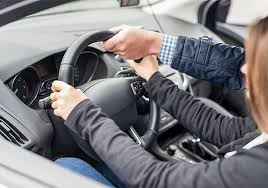Getting a driving licence is a significant milestone, but the process can be time-consuming and frustrating—especially when test appointments are booked up months in advance. That’s where the fast track driving licence option comes into play. Designed for those who need to get on the road quickly, fast track services offer a quicker route through the often sluggish system of learning and testing.
But what exactly is a fast track driving licence, who is it for, and how does it work? In this comprehensive guide, we’ll explore everything you need to know—from eligibility and benefits to potential risks and how to choose the right course.
What Is a Fast Track Driving Licence?
A fast track driving licence (also known as an intensive driving course or crash course) is a programme that allows learners to complete both their driving lessons and test in a condensed time frame—often within one to four weeks. Rather than spreading lessons out over months, learners receive daily instruction, building skills rapidly and efficiently.
In some cases, fast track services also help secure priority theory and practical test dates, bypassing long waits and allowing candidates to get licensed much sooner.
Who Should Consider a Fast Track Licence?
Fast track driving courses are ideal for:
- People with time-sensitive needs – such as job offers requiring a licence, relocation plans, or upcoming life changes.
- Learners with prior experience – those who may have already done some lessons or previously failed a test.
- Confident beginners – fast learners who can absorb and apply information quickly under pressure.
However, they may not be ideal for complete beginners who require more time to build confidence and road awareness gradually.
Key Benefits of Fast Track Driving
1. Save Time
Traditional driving lessons can stretch over several months, especially with delays in test bookings. Fast track options compress this timeline drastically—some students pass in just 1–2 weeks.
2. Focused Learning
Daily lessons build muscle memory and confidence quickly, reducing the risk of forgetting key skills between sessions.
3. Priority Test Bookings
Many reputable fast track providers have systems or partnerships that allow them to secure earlier test slots.
4. Cost-Effective in the Long Run
While the upfront cost may seem higher, condensing lessons into fewer weeks can save money compared to ongoing weekly sessions over many months.
How It Works
Here’s a general breakdown of how fast track driving licence programmes operate:
Step 1: Assessment
Most courses start with an assessment lesson to determine your current skill level. This helps instructors tailor the course to your needs.
Step 2: Course Booking
Depending on the provider, you can choose from packages like:
- 10-hour refresher courses
- 20–30 hour intermediate courses
- 40+ hour beginner courses
Step 3: Theory Test (if not already passed)
Some providers include theory test training and booking assistance. You may be able to fast track this process too.
Step 4: Practical Lessons
Lessons are scheduled daily—usually 2 to 5 hours per day—over the course of 1 to 4 weeks, depending on your package and experience.
Step 5: Practical Test Booking
Once you’re ready, the provider arranges your driving test—often using cancellations or special access to earlier slots.
Choosing the Right Provider
With so many fast track options available, choosing the right provider is critical. Here are a few things to look for:
✅ DVSA-Approved Instructors
Make sure the driving school only uses instructors approved by the Driver and Vehicle Standards Agency (DVSA).
✅ Transparent Pricing
Avoid companies with hidden fees. Ensure your package includes test fees, instructor time, and materials.
✅ Flexibility
Good providers offer flexible scheduling and tailor the pace to your learning style.
✅ Reviews and Recommendations
Check online reviews and ask for testimonials. Reliable providers will have a strong track record and customer satisfaction.
Common Pitfalls to Avoid
❌ Unrealistic Promises
Be wary of providers guaranteeing a pass. While intensive training boosts your chances, passing depends on your performance.
❌ Burnout
Fast track courses are intense. Don’t underestimate the mental and physical energy required for multiple hours of driving daily.
❌ Lack of Preparation
Cramming may work for school exams, but driving requires confidence and experience. If you’re not ready, you’re better off delaying your test.
Fast Track vs. Traditional Learning
| Feature | Fast Track | Traditional |
|---|---|---|
| Time | 1–4 weeks | 3–6+ months |
| Cost | Higher upfront | Spread out over time |
| Flexibility | Low (fixed schedule) | High |
| Ideal For | Urgent needs, experienced learners | Beginners, nervous drivers |
FAQs
Is a fast track licence legal?
Yes. You still must pass the same DVSA theory and practical tests. The process is simply accelerated.
Can I do a fast track course if I’ve failed before?
Absolutely. In fact, many learners use fast track courses as a way to bounce back after a failed attempt.
Do fast track tests have a higher pass rate?
Not necessarily. Your pass rate depends on your preparation and ability—not the speed of the course.
Final Thoughts
A fast track driving licence can be a game-changer for those who need to get on the road quickly. Whether you’re under pressure from a new job or just eager to gain independence, intensive courses offer an efficient, focused way to learn.
That said, they’re not for everyone. Success in a fast track course depends on your ability to learn quickly, stay focused, and remain calm under pressure. If that sounds like you, a fast track driving licence might just be the smartest route to hitting the road.
Ready to fast track your freedom? Do your research, find a trusted provider, and get started on your journey today.

